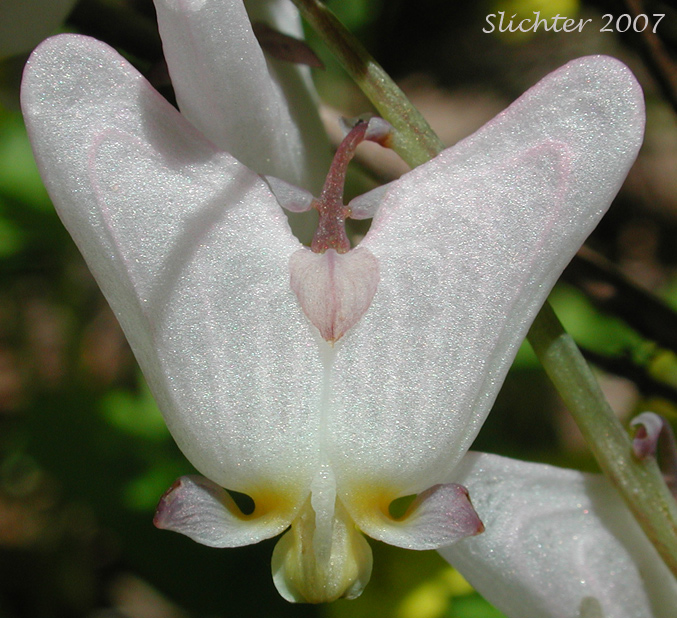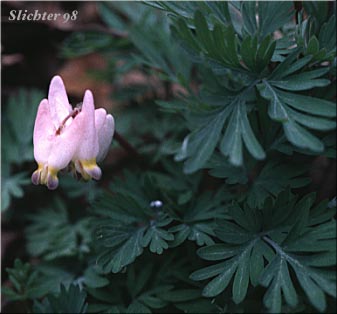 -
- 
 -
- 
 The photo at right shows dutchman's breeches as seen from Catherine Creek, Columbia River Gorge, east of Bingen, WA.
The photo at right shows dutchman's breeches as seen from Catherine Creek, Columbia River Gorge, east of Bingen, WA.
Dicentra cucullaria is an attractive perennial wildflower relative of bleeding hearts. It arises from an erect root covered with numerous, bulbous tubers. Numerous long-petioled leaves arise at ground level. Individual leaves are compound pinnate, often three to four times compoundly divided into linear segments roughly 1.5 to 3 mm in length.
The flower-bearing stems arise separately from the leaves (as seen in the photos), and are topped by loose racemes of from 3 to 8 flowers. Flowers are four-petaled. The corollas are creamy white or pinkish, the inner petals being yellow-tipped (See photo at right.) The petals are about 1 cm in length and the outer petals each have a curved, divergent spur about 7-11 mm in length. The seed capsules are fusiform.
This is an attractive wildflower for native gardens, especially when it can be planted away from taller plants that may overpower it. The flowers and lacy foliage are both attractive. It arises in early spring and disappears by May. Slugs like it and its more common cousin, the Bleeding hearts. Dutchman's breeches would probably be more suited for gardens east of the Cascades, however I've had several plants surviving in thick pine litter for at least five years. They are definitely pretty mixed in with bleeding hearts, shooting stars and fawn lilies.
Dutchman's breeches is found in moist soils and gravelly banks. In the Columbia River Gorge, it is often found within woodlands of Oregon white oak.
Dutchman's breeches is found in the west primarily along the Columbia and Snake Rivers from about Crown Point in the western Columbia River Gorge and extending eastward to southeastern Washington and northeastern Oregon and western Idaho (in the vicinity of the Snake River).
Variety cucullaria is found extensively throughout central and eastern North America (from the eastern edge of the Great Plains).